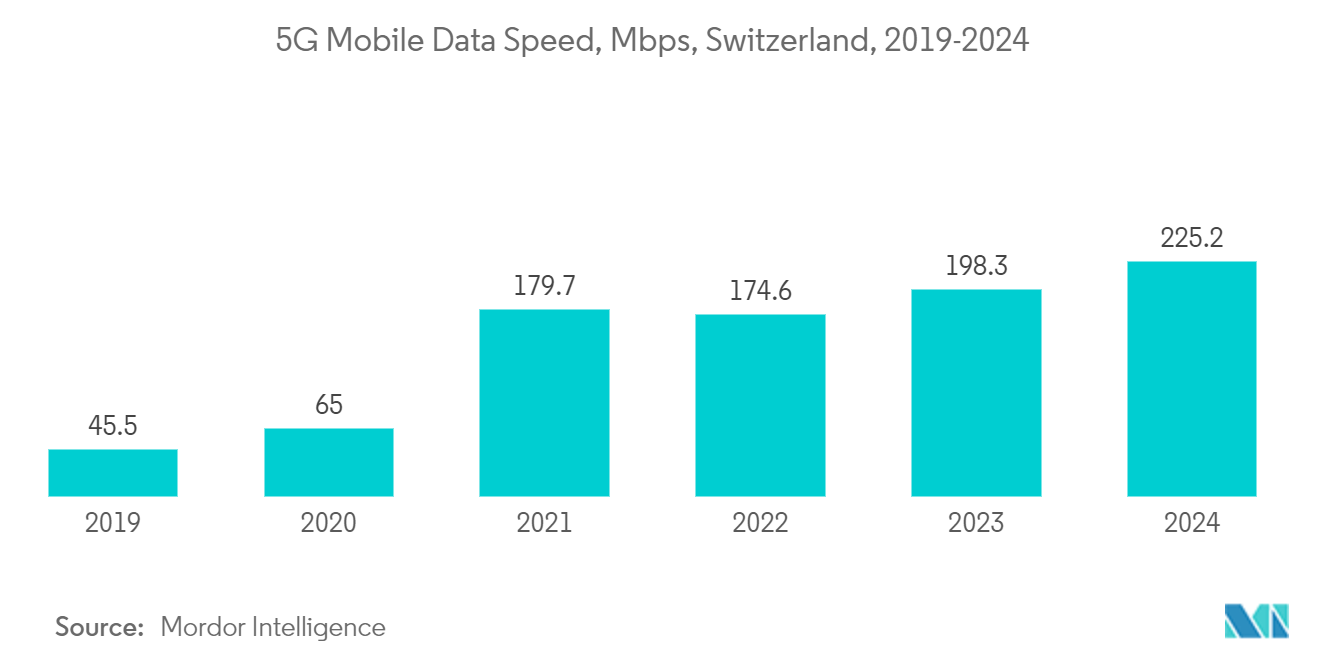Market Trends of Switzerland Data Center Cooling Industry
IT & Telecommunication Segment Holds the Major Share
- Switzerland's data center market is witnessing growth, fueled by companies' rising adoption of cloud services. This surge is largely attributed to the integration of cutting-edge technologies such as artificial intelligence, big data, and blockchain. In the Swiss IT landscape, cloud computing, encompassing the broad spectrum of anything-as-a-service (XaaS), stands out as a pivotal trend. Yet, it's noteworthy that while many cloud solutions remain predominantly in-house, alongside conventional outsourcing and managed services, the software-as-a-service (SaaS) model is carving out a significant niche as a preferred procurement approach.
- Globally recognized hyperscalers, including AWS, Google, and Microsoft, have established their presence in Switzerland. Additionally, in November 2024, Genesys bolstered its investment in Switzerland by launching a new Genesys Cloud CX region in Zurich.
- In May 2024, Switzerland announced a CHF 320 million investment in a new cloud infrastructure aimed at bolstering its public administration. The initial functions of this Government Cloud are slated for activation in 2026. With the assistance of hyperscale data centers, robust and scalable cloud networks are being crafted, promising heightened customer satisfaction, improved availability, and reduced costs. Given these advancements, the cloud data center segment is poised to dominate the Swiss data center market capacity by 2029.
- Telecom companies are increasingly investing in Switzerland's data center market, spurred by the growing adoption of 4G and the upcoming wave of 5G. In April 2024, Ericsson and Swisscom, bolstering their long-standing collaboration, unveiled a multi-year agreement. This pact aims to enhance the innovation ecosystem and propel the growth and energy efficiency of Swisscom's 5G network in Switzerland. Such developments are fueling the data center cooling market in Switzerland.

Liquid-based Cooling is the Fastest-growing Segment
- Switzerland's data center market is experiencing a significant influx of investments. Notably, Vantage Data Centers is channeling over 370 million Swiss francs into establishing its second hyperscale facility in the country. In addition, operators like Vantage are increasingly turning to liquid cooling technology as a means to reduce power consumption in their facilities.
- As AI continues to advance, data centers are consuming more water for cooling purposes. This surge underscores the urgent demand for enhanced cooling solutions. The rapid evolution of AI is propelling a significant uptick in energy consumption across data centers, with inefficient cooling practices being a primary factor. A case in point: a Swiss startup recently secured USD 1.85 million in funding to bring its innovative metal foam cooling technology to market. These metal foams excel in heat exchange and fluid transport, making them particularly effective for liquid and two-phase cooling systems.
- Moreover, the rise in connectivity and the surge in online shopping are set to fuel the generation of data and the need for processing facilities. In Switzerland, WooCommerce stands out as the dominant e-commerce platform, hosting 34.37K stores, which is 32.93% of the region's total. Following closely is Shopify, backing 22.71K stores, making up 21.76% of the total. These market advancements are driving increased data traffic per smartphone, leading to the expansion of data centers and a heightened demand for DC cooling infrastructure in the country.


